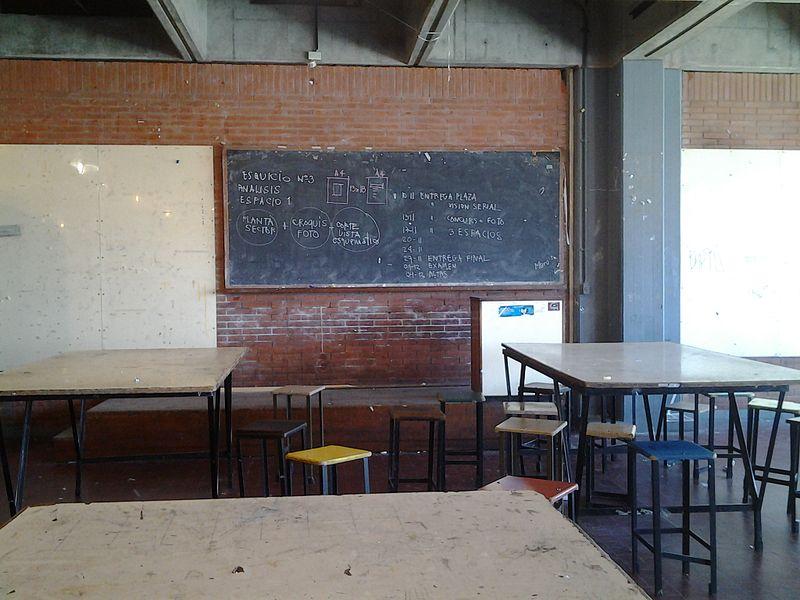FRIDAY FILE - Excluded from the debate on educational reform, women teachers, who represent more than 96% of teachers in preschool, 66% in basic education and 51% in secondary school, are protesting against a new law that will affect them negatively, especially those working in rural and indigenous communities.[1]
By Katherine Ronderos
Mainly women teachers in the states of Veracruz, Michoacán, Oaxaca, Guerrero and Chiapas (Mexico) went on strike while more than 30,000 teachers from some of the country's poorest states moved into Mexico City and set up camp in the Zócalo, the city center, for three weeks in September. They are protesting en masse after the government pushed through “secondary” laws aimed at reforming the Education Act, in particular aspects related to teachers’ careers. They are demanding that the government moderate its education reforms.
Oaxaca women teachers of section 22 of the National Education Workers' Co-ordinating Committee (CNTE), a national teachers’ union, have left their children, communities and homes behind to claim their labor rights in Mexico City, determined to continue fighting the injustice that keeps them marginalized.
Political context
The educational reform of 2012 - 2013 in Mexico is a constitutional amendment submitted by the President Enrique Peña Nieto, within the framework of agreements and commitments in the Pact for Mexico. The primary purpose of the Pact is to create consensus that transcends political differences to enable Congress to pass the reforms necessary to promote democracy and economic growth, as well as lower poverty and social inequality. The House of Representatives and the Senate passed the educational reform in December 2012. In February 2013, the reform was declared constitutional by the Federal Legislature, enacted by the Executive, and published in the Official Journal of the Federation. On 10th September 2013, three laws were enacted: the General Education Law, the Law of the National Institute for the Evaluation of Education and Law of Professional Education Service.
The reform aims to impose a system of evaluation on education workers, covering their entry to the profession, promotion and continued employment in the workplace. Mexican schools have higher relative costs and worse results than any other in the 34-nation Organization for Economic Cooperation and Development (OECD) and therefore the evaluation is based on the OECD criteria.

The management structure of educational institutions is also being reformed. The union regards this as particularly damaging as it removes the Mexican state from the process of funding the operation of education institutions. Instead, the cost of operating school canteens, maintaining infrastructure, and providing services such as water and light will be left in the hands of education centers and parents.
Although Mexico's President Enrique Peña Nieto has stressed that teachers must pass exams and be assessed to improve academic standards, the Government has failed to provide proper training, educational support, funding or facilities for teachers for their preparation, especially in the poor regions.
An evaluation system added to the constitution lies at the heart of the protests. It’s not true that the teachers don’t want to be evaluated, argues Sarvia Analí Valverde, a pre-school teacher of a small community in the indigenous Mixtec region of the state of Oaxaca. “We want to be evaluated, but according to the social and economic context we work in, according to our reality, not standardized procedures”.
On the other hand, there is a need to be realistic about the policies the government wishes to implement. For instance, Maria Santiago, also a teacher in Oaxaca, highlights how realistic it is to provide English languageeducation when the community’s main indigenous languages are Zapotec or Mixtec, and Spanish their second language. Similarly, Professor Elizabeth Escobar criticizes how the new law is requiring working with the Internet, when there are communities without electricity.
Teachers such as Valverde explain that teachers are willing to improve their knowledge and skills, but their options are limited in the poor and rural areas they work in. “We want to train more, but we’re in remote communities, with no public transport, and we only have weekends to travel to study”, Valverde emphasizes that “teachers are not responsible for the backwardness of our educational system. The backwardness of the system is a structural problem due to, among other things, the fact that the money they should give to education is spent on other things”.
The truth about women teachers protesting
Most of women teachers working in rural and indigenous areas earn only $600 USD or less per month. They are the ones who live with daily shortages, hunger of their students and suffer the miserable conditions of the school buildings that do not have even the most basic facilities, such as classrooms, bathrooms, proper roofs, water or electricity. “As teachers, we’re the ones living in the communities with our students, their mothers and fathers, and we know the scarcities they face and it fills us with rage,” says a young teacher from the state of Oaxaca.
They tend to equip children with studying materials, such as pencils and notebooks, mostly from their own money. Although there are no teachers for extracurricular activities, i.e. English, sports, arts and computer, that does not stop them from teaching dance, games, or gardening to enhance skills development to meet some schools’ needs.
Their working conditions are far from decent and sufficient, with no access to health services, threats with losing their jobs during pregnancy, and being away from home is hard and exhausting.
In the past, women teachers’ role in protests was to cook for peers and participate in marches, but they have now become true activists who lead marches, are part of decision making processes, mobilize communities and give continuity to the movement. Beatriz Picasso Pérez, member of the steering group of the CNTE says, “We are many. Our participation is crucial. Before we only used to cook, but now we are in all the different phases of this mobilization. It is a constant struggle to be heard our voices, grabbed the microphone to channel our anger and helplessness”. Nevertheless and despite of the advancement of women teachers within the education movement, they face discrimination because of their gender. They struggle to have the same opportunities for career advancement as men, for instance, the Survey on Teaching and Learning International shows that only 34.7% of secondary Principals in Mexico are women.
Although the mainstream media has discredited their protest creating a hostile and violent environment for them, teachers have found great support from the alternative media to have their voices heard, circulating newsletters and sharing their concern in taxis, restaurants and on the street. People from different sectors who believe in their struggle are supporting with food, accompaniment in the camps and joining marches. But there is a great concern that authorities continue questioning the legitimate right to protest and are acting with violence and repression.
The living conditions in the recent weeks have been one of the hardest things for women teachers in this protest. They have survived rainfalls, diseases, sleeping on the floor and in the open air, cooking and eating in unsanitary conditions, coping with the struggle of no salary and most importantly, leaving their families and children behind and living with fear of a repressive eviction.
A major myth created by the media is that the teachers are protesting without offering constructive alternatives, when in fact, they have been working to develop practical solutions. For instance, Anabel Medina teaches at the last school for women teachers left in the state of Oaxaca, and describes how women teachers have responded to the lack of basic infrastructure and materials: “In 2000 our building collapsed and they rebuilt part of it, but just classrooms and no labs or workshops. The programs they send us are minimal, with no teaching methods so we have had to design our own methods, like the emancipatory pedagogical projects”.
Celiflora García Cervantes trains teachers to create strategies that incorporate indigenous languages in their teaching practice and believes the reforms will roll back their achievements. “A team of six advisers goes to the schools. We meet with technical teams and then collectively build an educational project based on the knowledge of the students, on their interests or on a particular social problem in their community and the project is conceived in both languages.”
The challenge
As teachers, mothers and women human rights defenders, their main challenge is to strengthen their leadership work and make their voices heard. The essence of their struggle is to fight for a better future for all Mexican children, for education to be public and free, and to oppose the current education reform because parents will not be able to afford to pay for education that will possibly be of lower quality.
Despite that protesters were violently evicted from the encampment, in which police gassed marching teachers on September 13th, section 22 of the CNTE remain committed to protesting in the Zócalo. While the outcome of this long strike is still unclear, the decision to continue the resistance provides inspiration for other women human rights defenders.
